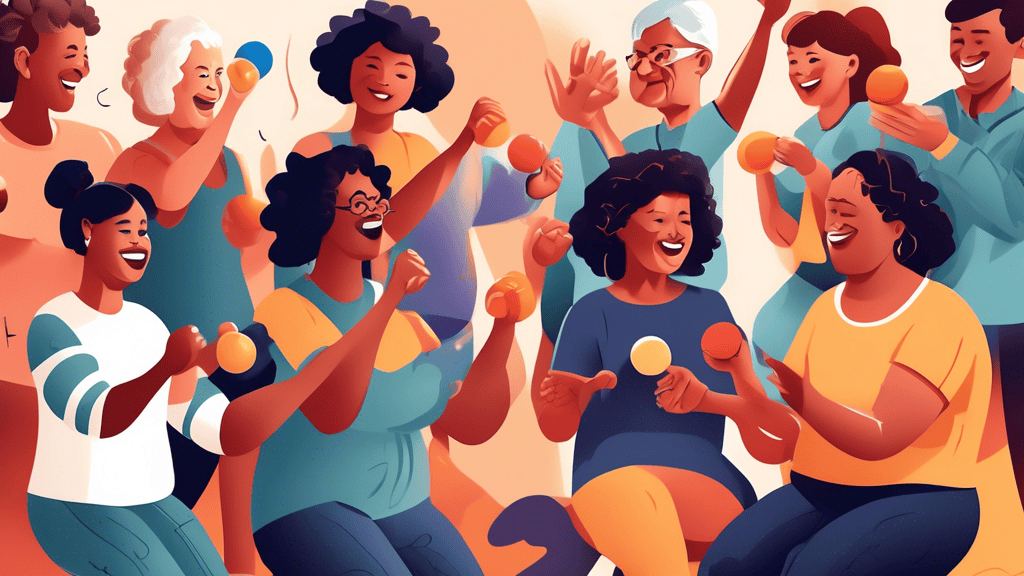Exercises to Maintain Hand Strength and Dexterity
Key Takeaway
Hand strength and dexterity are crucial for performing everyday tasks, from typing on a keyboard to lifting objects. Regular exercises can help maintain and even improve hand functionality, which is particularly beneficial as we age or recover from injuries.
Importance of Hand Strength and Dexterity
Hand strength and dexterity play vital roles in our daily lives, influencing our ability to perform tasks ranging from the mundane to the complex. These abilities are critical for various professions, hobbies, and general day-to-day activities. Enhancing and maintaining hand strength and dexterity can improve overall hand health, reduce the risk of injuries, and increase the quality of life.
Understanding Hand Strength
Hand strength generally refers to the force your muscles can exert when gripping, pinching, or lifting objects. It involves various muscles and tendons in the hand and forearm. Weak hands can result in difficulties with simple tasks like opening jars or carrying groceries.
Understanding Hand Dexterity
Hand dexterity involves the skillful and precise movement of the fingers and hands. It is essential for activities requiring coordination and control, such as playing musical instruments, writing, and typing. Good dexterity allows for fine motor skills, which are necessary for intricate tasks.
Exercises to Maintain and Improve Hand Strength and Dexterity
A regular routine of specific exercises can help maintain and enhance hand strength and dexterity. Here are several effective exercises, which require minimal equipment and can be done at home.
1. Grip Strength Exercises
Grip strength is crucial for activities that involve holding objects. The following exercises target the muscles involved in gripping:
1.1 Squeeze Ball Exercise
Using a stress ball or a soft rubber ball:
- Squeeze the ball as hard as you can.
- Hold the squeeze for 3-5 seconds.
- Release and repeat 10-15 times.
This exercise helps to strengthen the flexor muscles in your hand and forearm.
1.2 Towel Wringing
Use a small towel for this exercise:
- Wet the towel lightly and twist it as if you are wringing out the water.
- Hold the twisted position for 5 seconds.
- Release and repeat with alternating twisting directions 10 times each.
This targets various muscles in your hands and forearms.
2. Pinch Strength Exercises
Pinch strength is vital for holding small objects between the thumb and fingers:
2.1 Clothespin Pinch
Use a clothespin or adjustable hand gripper:
- Pinch the ends together using your thumb and index finger.
- Hold for 2-3 seconds and release.
- Repeat 10-15 times for each finger combination (thumb and middle finger, thumb and ring finger, etc.).
This exercise helps to improve the strength of your pinching muscles.
2.2 Coin Pick-ups
Spread several coins on a flat surface:
- Pick up each coin one at a time using your thumb and one other finger.
- Alternate fingers for each coin to ensure all fingers are exercised.
This enhances fine motor skills and pinch strength.
3. Finger Dexterity Exercises
Finger dexterity is essential for precise movements. The following exercises focus on improving finger movement and coordination:
3.1 Finger Taps
Sit comfortably with your hand resting on a flat surface:
- Tap each finger to your thumb sequentially, starting with the index finger and moving to the little finger.
- Increase the speed gradually.
- Perform for 1-2 minutes with each hand.
This exercise enhances finger isolation and movement control.
3.2 Thumb Opposition
Hold your hand with fingers extended:
- Touch the tip of your thumb to the tip of each finger sequentially, creating a ring.
- Repeat the sequence 10-15 times per hand.
This ensures that your thumb remains flexible and your fingers coordinate well with it.
4. Wrist Strength and Flexibility
Strong and flexible wrists are essential for supporting hand movements and reducing the risk of injuries:
4.1 Wrist Flexion and Extension
With your forearm resting on a table and your hand hanging off the edge:
- Use a light weight or a water bottle.
- Flex your wrist up and hold for 2-3 seconds, then lower it down.
- Perform 10-15 repetitions for each wrist.
This helps to strengthen the muscles in the forearm and wrist.
4.2 Wrist Rotations
Rotate your wrist in circular motions:
- Perform both clockwise and counterclockwise rotations.
- Do 10-15 rotations in each direction for each wrist.
This increases joint flexibility and prevents stiffness.
Incorporating Finger Stretches
Stretching exercises are crucial to maintain flexibility and prevent stiffness in your hands and fingers:
1. Finger Extension Stretch
Straighten your fingers and stretch them:
- Hold the stretch for 15-30 seconds.
- Repeat 2-3 times.
This helps to relieve tension in the hand and improve overall flexibility.
2. Finger Spread Stretch
Place your hand flat on a table:
- Spread your fingers as wide as possible.
- Hold the position for 10-15 seconds.
- Repeat 5-10 times.
This increases the range of motion for your fingers and promotes better hand performance.
Conclusion
Consistent hand exercise regimens are essential for maintaining hand strength and dexterity, leading to enhanced functional abilities and a lower risk of injury. Adding these exercises to your daily routine can yield significant long-term benefits, making everyday tasks easier and more efficient. Whether you are rehabilitating from an injury, dealing with arthritis, or simply aiming to keep your hands healthy, these exercises can help you achieve and maintain optimal hand function.
Additional Tips
- Incorporate exercises into your daily routine to form a habit.
- Listen to your body and avoid overexerting your hands, especially if you feel pain or discomfort.
- Gradually increase the intensity or duration of exercises as your strength and dexterity improve.
- Consider seeking advice from a healthcare professional, especially if you experience pain or have underlying conditions.
